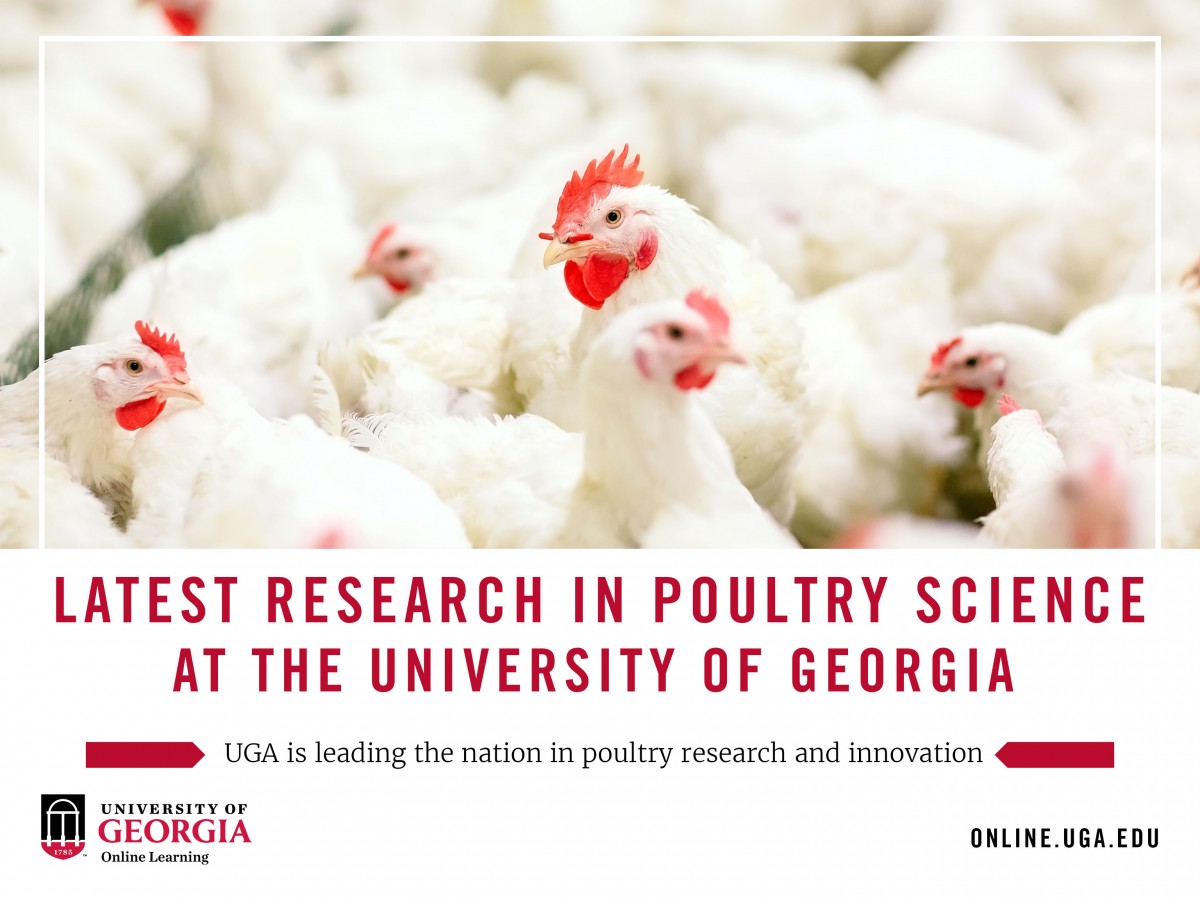Latest Research in Poultry Science at UGA
Latest Research in Poultry Science at UGA

Can water treatments help reduce Salmonella levels before processing?
“Feed withdrawal before moving broilers to the processing plant appears to increase their susceptibility to Salmonella, indicates research from the University of Georgia. When feed is withdrawn, a decrease in lactic acid production occurs, causing the pH to become more neutral. The result is an environment favorable for bacteria like Salmonella to flourish in the crop,” Caitlin Harris, graduate research assistant at the university, told Poultry Health Today
Harris undertook a study to see if there were any on-farm interventions that would help decrease the prevalence of Salmonella. Because feed is always withdrawn before water, her research evaluated water treatment interventions to maintain the bird’s intestinal pH balance. Birds with no feed withdrawal had much less Salmonella compared to birds in the 12-hour and 6-hour feed withdrawal treatment groups. The results also indicated that the acidic water treatments did not affect feed consumption, water usage or Salmonella recovery. This research explains that it is very difficult to control Salmonella during the withdrawal period. Salmonella control needs to start on the farm as early as possible instead of waiting until the birds are about to go to the processing plant.
Heat-stress study shows need to increase ventilation with stocking density
“As bird density increases, broiler producers need to be ‘more aggressive’ with house ventilation to prevent heat stress in flocks,” Brian Fairchild, PhD, professor, and Ming Lin Teo, graduate research assistant, University of Georgia, told Poultry Health Today.
To give producers a better grasp on the effects of bird density on broiler body temperature, Fairchild and Teo measured deep-body temperature by surgically implanting small data loggers in the abdominal cavity of broilers. The results of the study demonstrated that as stocking density increases, deep-body temperature increases as well. This research will help producers improve their ventilation protocols. By providing optimum environments and minimizing heat stress, the energy from the feed can go toward growth and development, he said.
Coccidiosis control, litter management key to NE prevention in broilers raised without antibiotics
Charles L. Hofa, University of Georgia, has done research finding that one of the triggering factors that allows the growth of Clostridium perfringens (CP) — the toxin-producing organism that causes NE — is coccidial damage to the chicken’s intestinal epithelium. The intestine’s response to damage is to produce mucous for self-protection, which CP utilizes as a food source. The more mucous, the faster CP will grow, explained Hofacre, president of Southern Poultry Research Group Inc., Athens, Georgia.
Hofacre conducts research to better understand the CP and NE cycle and how it can be broken. In a recent study, he found that interventions need to be aimed at reducing CP colonization. If there’s less CP colonization, there’s less toxin produced, which correlates with lower levels of NE. Because coccidia and CP both thrive on moisture, good litter management is imperative for keeping these organisms in check. Hofacre also advised increasing downtime between flocks. Anything less than 14 days allows too much buildup of bacteria in the litter, he cautioned.
For more information about the University of Georgia’s online Master of Avian Health and Medicine degree program and to learn how you can make a difference in this industry, visit our degree homepage.
This information is adapted from multiple articles appearing on Poultry Producer.
